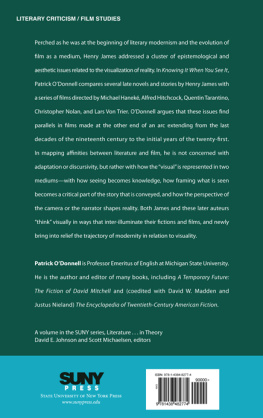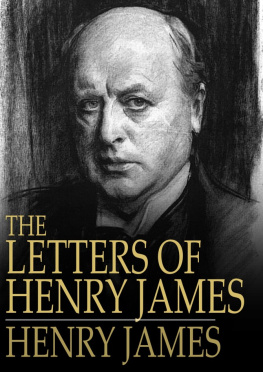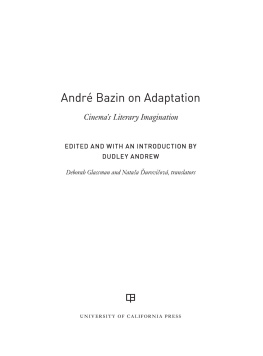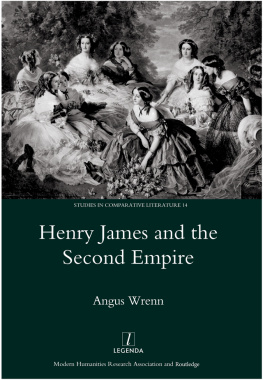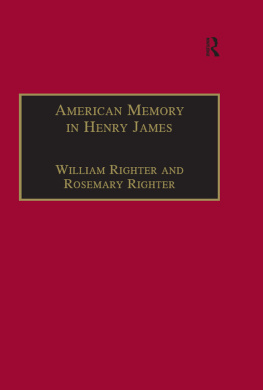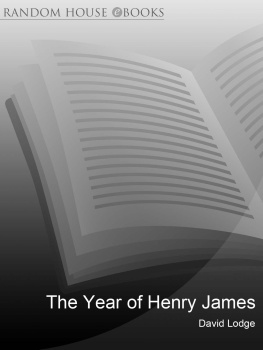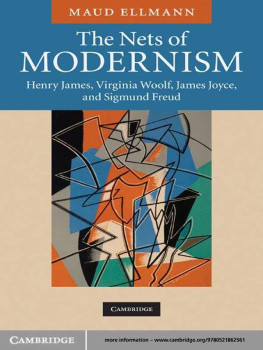Chapter 1
Of Birds and Birdcages
In the Cage and The Birds
Like a bird on the wire
Like a drunk in a midnight choir
I have tried, in my way, to be free.
Leonard Cohen, Bird on the Wire
L eonard Cohens 1969 signature lyric posits a conundrum about freedom: I have tried to be free in my vocalizations, sings the Keatsian bird/drunk, but my freedom to sing has coincided with linearity, restriction, and conformity. In this chestnut of poetic complaint, form and the constrictions of the poetic instrument (wire referring to guitar strings) contend with spontaneity in the reproduction of the poets song and soul, his freedom. Notwithstanding Cohens I have tried and in my way (those clichs of contemporary victimization), his image of a bird on a wire demonstrates what I want to define as a particular circumstance of modernity to be found in the first set of works I wish to discuss, In the Cage, Henry Jamess deeply weird, voyeuristic novella of 1898 and The Birds, Hitchcocks 1963 epic of avian mayhem and the second of the trilogy of filmssandwiched between Psycho (1960) and Marnie (1963)devoted to possessive mothers, bad daughters, and generally possessed adults. This circumstance can be characterized as the dually complicit and conflicted relation between the simulation and the putative freedom of the subject, which foments the illusion that the more the
In drawing out this relation, the first question to be asked is why James and why Hitchcock on the specific question of the alienation of the subject? To begin, somewhat facetiously, as portrayed subjects, it is sometimes difficult to tell them apart, at least in profile. Both are portly modernists, bookends to an epoch, at least in the case of James on the front end if we follow Hugh Kenners characterization of him in The Pound Era as the eras absent father, encountering the young Ezra and Dorothy in London while on a walk with his niece toward the evening of a gone world, a meeting that Kenner characterizes as follows:
Mr. Pound! in the searching voice, torch for unimagined labyrinths; and on, to the effect of presenting his niece Margaret; whereafter Mr. Pound presented Mr. James to his wife Dorothy; and the painters eye of Dorothy Pound, ne Shakespear, took in, as James would have phrased it, Henry James. A fairly portly figure.
Fifty years later, under an Italian sky, the red waistcoat seemed half chimericalthat may be imagination!but let us posit it; Gautier wore such a garment to the Hernani premire, that formal declaration (1830) of arts antipathy to the impercipient, and James would have buttoned it for this outing with didactic deliberation.
For Kenner, whose treatise on modernism as a novel is modeled on Ulyssesthus the implicit comparison between the didactic, stately, plump Buck Mulligan of the novels introit and the didactic, portentous Henry James shepherding in modernism by seeing out the short nineteenth centuryJamess unimagined labyrinths conspire with arts antipathy to the impercipient to produce a body of work that combines obsessive reflexivity and compulsive attention to detail.
We might also say the same of Hitchcocks films from, roughly, The Man Who Knew Too Much (1934 version) on, in that Hitchcock
So much depends in James and Hitchcock on the perception of detail, on the ability to sort out between two or several equally valid logics which one is most consonant with reality, or to exist, impossibly from the perspective of ideological critique, in both or all at once, though it is certainly pretty to think so. Everything counts, writes James in the preface to his first novel, nothing is superfluous the explorers notebook [is] endlessly receptive; thus, an obsessive attention to every detailwhat he describes as the beguiling charm of the accessory facts in a given casemarks the high moment of revelation for many a James protagonist. As I noted in the introduction, in the odd figure he develops for his early work as an author for whom everything comes to count, James writes that as a young embroiderer of the canvas of life he
began to work in terror of the vast expanse of that surface, of the boundless number of its distinct perforations for the needle, and of the tendency inherent in his many-colored flowers and figures to cover and consume as many as possible of the little holes. The development of the flower, of the figure, involved thus an immense counting of holes and a careful selection among them. That would have been a brave enough process, were it not the nature of the holes to so to invite, to solicit, to persuade, to practice positively a thousand lures and deceits.
This lure of detail which, extending Jamess figure, is a fetishistic excrescence upon the grid of reality. In a preliminary sense, what is happening with detail in James and Hitchcock, what has transpired under modernity according to iek, who traces the split of the subject of desire and the subject of drive from Hegel to Badiou, is the evolution of identity as fundamentally voyeuristic, a way of seeing that we will witness repeatedly in the comparisons in this book between James and modern cinema. Voyeuristic identity in this formulation is a matter of filling in the blanks of an inconceivable totality by perversely observing the always suspicious acts of others and by assuming that the real action is always elsewhere, but only real if observed unobserved, or observing and observed with both parties feigning ignorance of observability.
This condition of the impossible modern subject has nothing to do with desire as such, but everything to do with the splitting of desire from drive and, analogously, within the more confined realm of modernist aesthetics, the splitting of the capacity for reflexivity from the capacity for representation. James worries about it in his preface to Roderick Hudson: you can never fill in all of those tiny holes, you can never see or know enough. In order to make it narratable, the author is driven, reflexively, to leave myriad gaps, and to exert a principle of selectivity that reveals as its significant aesthetic limitations as much as it enables one to write in the first place. Hitchcock has similar concerns: despite all of the clues, repetitions, doublings, details, symbolic and logical chains, and technological gimmickry of his films, the narratives themselves never add up, save as visual puzzles and iconographic fields. D. A. Miller puts it this way in discussing the continuity errors and red herring/McGuffin plots foisted upon a public looking for solutions to mysteries and film scholars looking for clues to hidden meanings in the offerings of the master of suspense:
En bloc, the errors uncannily combine with the whole ethos of mistake, confusion, and nonsense that permeates Hitchcockian cinema, from its elaborate intrigues that never make sense on close inspection, to its perfectionistic protagonists foiled by slipups as little as a latchkey, to its general theology of original sin that puts everyone, and even everything, in the wrong. Hitchcock may not set out to commit a particular continuity error, but in his accident-driven Weltanschauung, any such error must be considered as waiting to happen, and when it does, feel not just stupidly out of place, but also eerily at home. These motley accidents, though narratively dysfunctional, have the odd capacity to bond, like open valences in chemistry, with stylistic motifs that lend them some of their own artistic necessity. Yet these bonds are wild, unstable; they neither facilitate stylistic homogeneity nor bring hermeneutic repose to the Too-Close Viewer who attempts to read them.
Thus, Vertigo (1958), in which a man falls in love with and witnesses the death of the same woman twice, once for practice, once for real; The Birds, an essay on the apocalyptic incidental and accidental;
Next page
